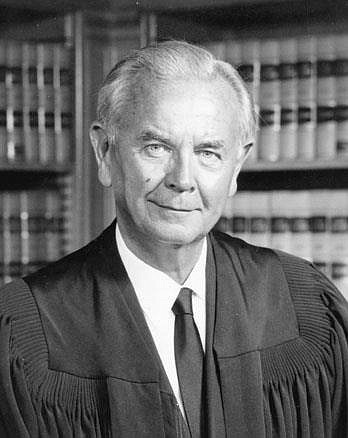In our final column celebrating Constitution Week, our attention broadens to one of the most significant cases in U.S. Supreme Court history, based on a 1962 Tennessee issue. Since the points brought by the plaintiff, Charles Baker of Memphis, parallel the situation then confronting Chattanooga and other Tennessee cities, it seems appropriate to explore the concept of "equal representation" in the U.S. Congress.
When the Constitutional Convention met in Philadelphia in 1787, the delegates quickly agreed that the Articles of Confederation no longer provided the necessary foundation for a functional government, and they began to debate and draft a new form of government. The issue of representation remained a primary question for the delegates: How might they balance the power between the central government and the states, between the large states and the smaller states and how could they assure that individual voices were not lost in the process. Those questions produced seemingly endless debates. Ultimately, the delegates proposed and approved a plan they believed would serve the varied needs.
In Article I, Section 2, the process for "equal representation" in the House of Representatives is clearly delineated: "The actual Enumeration shall be made within three years after the first meeting of the Congress of the United States, and within every subsequent term of ten years, in such manner as they shall by law direct. The number of Representatives shall not exceed one for every thirty thousand, but each state shall have at least one Representative ..."
The enumeration mentioned is our national census, scheduled to occur every 10 years, with results used to apportion the seats in the House so that each district contained about the same number of citizens. As the young nation grew, each state was charged with using the new census data to reapportion the House districts to assure equal representation.
In the late 1950s, Tennessee was still using the district boundaries established in 1901, based on the 1900 census. Residents in Tennessee's major cities, Memphis, Nashville, Knoxville, Chattanooga and Jackson, argued that the 1901 boundaries favored rural areas over the more rapidly growing urban areas. However, the 1960 presidential and congressional elections were scheduled to proceed without any adjustment to district boundaries.
Charles Baker, a resident of a Memphis suburb, filed suit in federal court naming Tennessee Secretary of State Joe Carr, defendant. Since the General Assembly was responsible for redistricting, the State of Tennessee responded with a statement that the courts could not render judgment in the case but must return it to Tennessee for a "political remedy" to a "political question."
In responding to Tennessee's statement, U.S. Supreme Court Justice William Brennan Jr., writing for the plurality, identified six factors that must be present for a court to withhold its opinion on such an issue. Brennan noted that those six factors were not present in Baker v. Carr, and therefore the case would be remanded to lower courts for future consideration.
So, what did that ruling mean? Why is it important to a study of constitutional law and current issues about representation?
First, the court deemed that the plaintiff, a citizen of the State of Tennessee, had legal standing to sue after showing "disadvantage ... as individuals" and asserted that the courts were the appropriate source of relief in cases involving "malapportionment."
Baker v. Carr established the role of the courts in judicial review of redistricting plans. Shockwaves rippled across the nation, and almost every state found itself the defendant in a series of lawsuits. Justice Brennan's opinion advanced the idea that unequal districts created "real and justiciable injuries," as the issue of equal representation was a fundamental concept in the U.S. Constitution. From the Preamble's first words, "We the People," to the history of political and constitutional rhetoric, the idea of equality of voters was an accepted element of representative government.
Baker v. Carr is considered the cornerstone of "one person, one vote," and within two years, 26 states had reapportioned their legislative districts, three forced by court-drawn plans and others under pressure. By 1966, 46 states had redrawn their lines to assure "equal representation," and each state was directed that the process would occur every 10 years, immediately following each census analysis.
The moral of the story for Chattanooga, Hamilton County and the region is that the census is critical to maintain the "one person, one vote" principle. Have you completed your census request?
Linda Moss Mines, the Chattanooga and Hamilton County historian, is a member of the Tennessee Historical Commission and regent, Chief John Ross Chapter, NSDAR.
